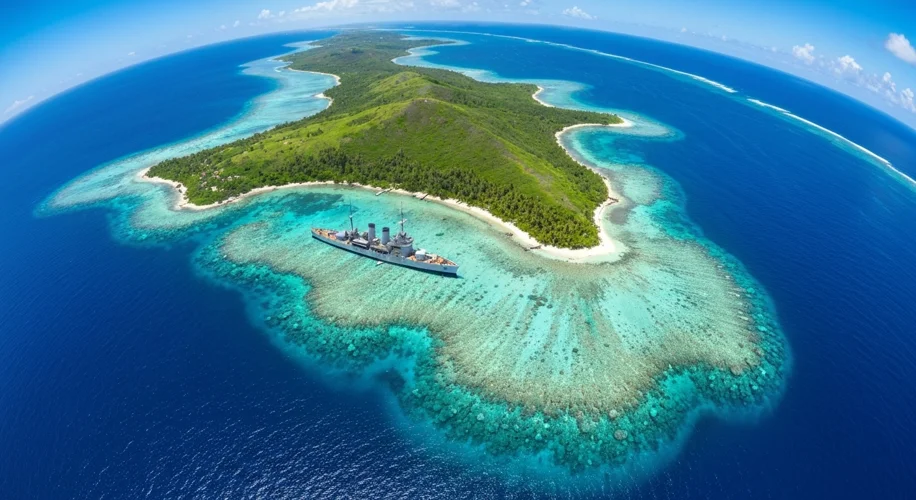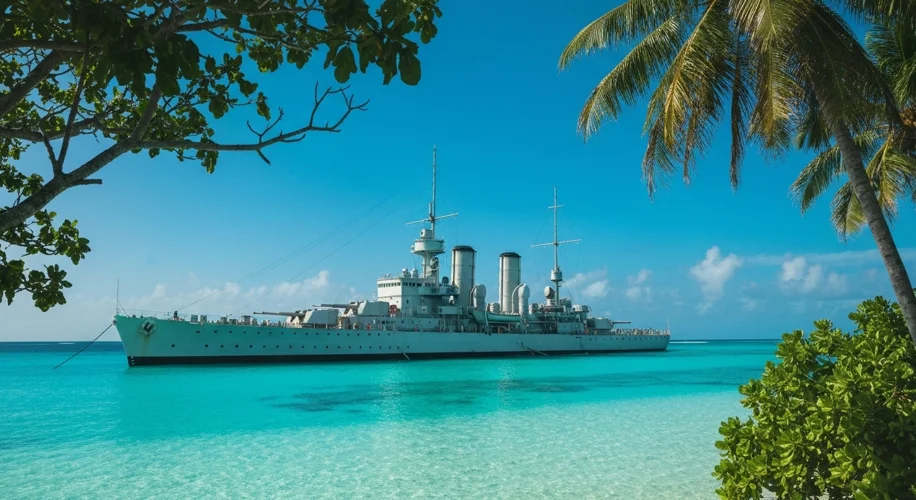The vast expanse of the Indian Ocean, a canvas of shimmering blue, held a secret in October 1914. Far from the muddy trenches and roaring cannons of Europe, a peculiar isolation was unfolding. The German light cruiser SMS Emden, a phantom of the seas, found itself anchored in the pristine lagoon of Diego Garcia. This island, a British possession nestled in the Chagos Archipelago, was renowned for its idyllic beauty and, crucially, its strategic harbor. What is truly astonishing is that for a period, this British base was reportedly unaware that a state of war existed between Great Britain and Germany.
The Great War, a conflagration that would consume a generation, had already begun in August 1914. Yet, on this remote South Indian Ocean atoll, the rhythm of life seemed almost untouched by the unfolding global catastrophe. The Emden, under the command of the dashing Korvettenkapitän Karl von Müller, had been operating in the Indian Ocean since September, a terror to Allied shipping. Its mission was to disrupt enemy trade routes, a task it performed with considerable success, sinking or capturing numerous vessels.

By late October 1914, the Emden’s engines were in need of significant repair. Its engines, the very heart that propelled it through the waves, required overhaul and maintenance. Von Müller, a shrewd tactician, had a daring plan. He knew of Diego Garcia’s excellent facilities, a British naval base, and he gambled on its isolation and the possibility of its unawareness of the ongoing conflict. It was a calculated risk, a high-stakes poker game played on the world’s stage.
The crew of the Emden, however, were far from ignorant. They were acutely aware of the war. Their presence in the Indian Ocean was a direct consequence of it. The irony was thick: the German sailors, engaged in acts of war, were seeking refuge and repair in a supposedly neutral, or at least oblivious, British sanctuary. Von Müller’s audacious strategy was to leverage this apparent unawareness. He needed time to fix his ship without drawing undue attention, to ensure the Emden could continue its raiding mission.
The reports suggest that the British officials at Diego Garcia, isolated and perhaps receiving infrequent news, were indeed caught off guard. They were not prepared for a German warship to appear on their doorstep, let alone one actively engaged in hostilities against their empire. The Emden’s crew, while outwardly maintaining a facade of peaceful visit, must have harbored a constant tension, a nervous anticipation of discovery.
For a crucial period, the Emden underwent its vital repairs. The sounds of hammering and grinding likely echoed across the serene lagoon, a stark contrast to the expected tranquility. The ship’s crew would have been under strict orders to maintain discipline and avoid any overt displays of their hostile intent. The isolation of Diego Garcia, which made it an attractive haven, also meant it was a poor source of real-time intelligence. News traveled slowly, and the sheer distance from the European warfront created a temporal and informational vacuum.
Did the British at Diego Garcia ever truly believe the Emden was there for innocent reasons? It’s a question that hangs in the salty air. Given the global context, it seems unlikely that they were entirely clueless. However, their immediate response might have been hampered by a lack of resources and a degree of disbelief that such a brazen act could occur. The Emden’s presence was a tactical coup for Germany, a testament to the vulnerabilities of imperial communication and the daring of naval commanders.
The respite for the Emden was, however, temporary. While its repairs were completed, the news of its location and activities eventually caught up. The raider’s luck would not last forever. The Emden’s daring raid and its peculiar sojourn at Diego Garcia became a footnote in the grand narrative of World War I, a fascinating glimpse into the strategic gambles and the strange temporal anomalies that war could create, even in the most remote corners of the globe.
This incident highlights the complex realities of naval warfare during the era and the significant challenges posed by vast distances and limited communication. The SMS Emden’s visit to Diego Garcia remains a curious tale of wartime audacity, where a German warship found temporary, and perhaps surprisingly accommodating, respite amidst the vast, blue silence of the Indian Ocean. It was a moment where the drums of war seemed to beat only faintly on a distant, idyllic shore.

